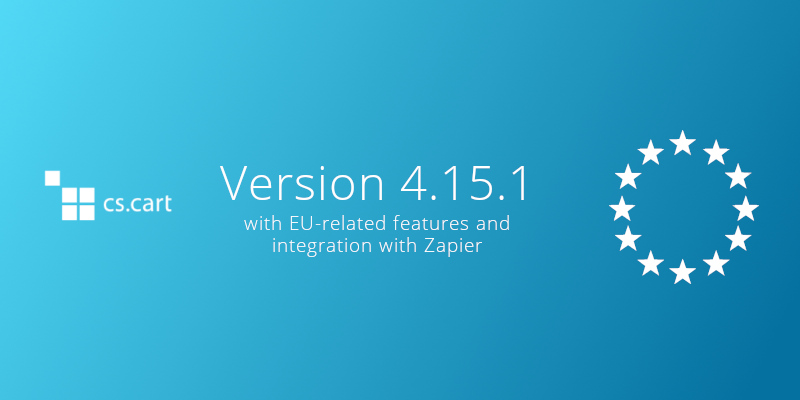Meet CS-Cart and Multi-Vendor 4.15.1 with EU-related features and integration with Zapier
We have released CS-Cart and CS-Cart Multi-Vendor 4.15.1. It brings a lot of changes: cookie consent pop-up for EU, Zapier integration for automated workflows, improved import with the ability to transfer products from Shopify, and much more. We’ll only cover the biggest changes here, but you can find the full list of changes in the documentation.
At the beginning, there are marketplace-specific improvements. Next you can read the general improvements that will be useful for both marketplaces and single-seller stores.
Contents
Marketplace-specific improvements
Marketplace-specific improvements
Import from Shopify
Recent surveys and interviews have shown that CS-Cart Multi-Vendor owners are very interested in syncing with Shopify to attract more vendors to their marketplaces. The idea is that vendors would still use their Shopify admin panels (because they’re used to it), but also sell products at Multi-Vendor marketplaces. An integration of this kind is a rather big undertaking, so we did not have the time to include it into version 4.15.1. But for now, we decided to include something simpler, yet useful: importing products from Shopify.
Once you install the “Import from Shopify” add-on, the “Sync data” menu item will appear in the “Administration” section. Admins and vendors use this page to upload their product export files from Shopify.
Owners of the Multi-Vendor edition have an additional choice of import modes. For those who are just launching their marketplace on CS-Cart, it is convenient to import all products, features, categories, etc. at once. Products become public and available to all vendors. The second mode is useful for those who import products for a specific vendor. In this case, the administrator imports entities that they could have created for vendors manually, such as products, characteristics, options, etc.
The new add-on offers a way for new vendors to place their products on your marketplace faster. But we’ll be looking into a full integration so that vendors could sell products on your marketplaces via Shopify.
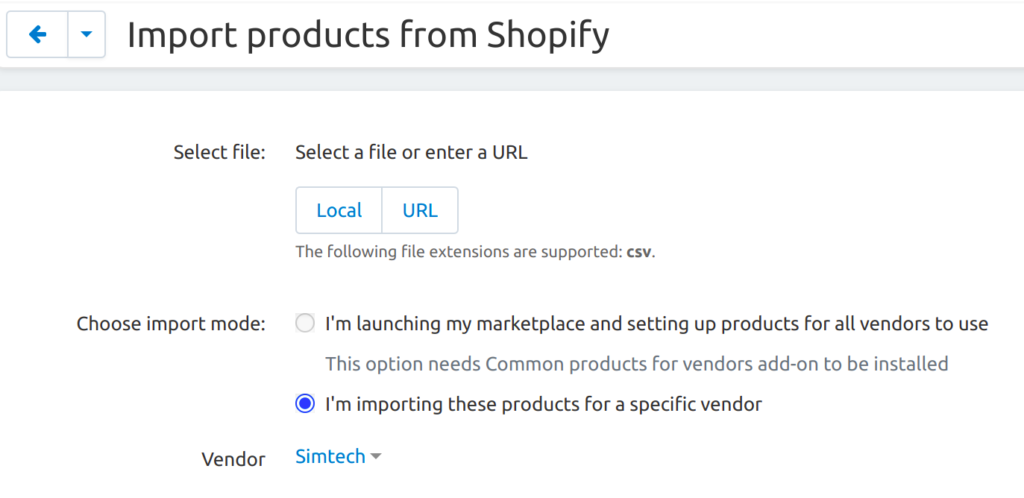
Administrator see changes in products on moderation
When marketplace owners don’t want vendors to make unnoticed changes to their products, they use the “Vendor Data Premoderation” add-on. With the add-on installed, modified products are first sent to the administrator for approval, and only then to the storefront. This is especially useful for marketplaces with a growing number of vendors.
In version 4.15.1, you can quickly see what changes vendors made to their products, and compare old texts and values to the new ones. Product moderation is faster and more convenient, as the administrators know what to focus on.
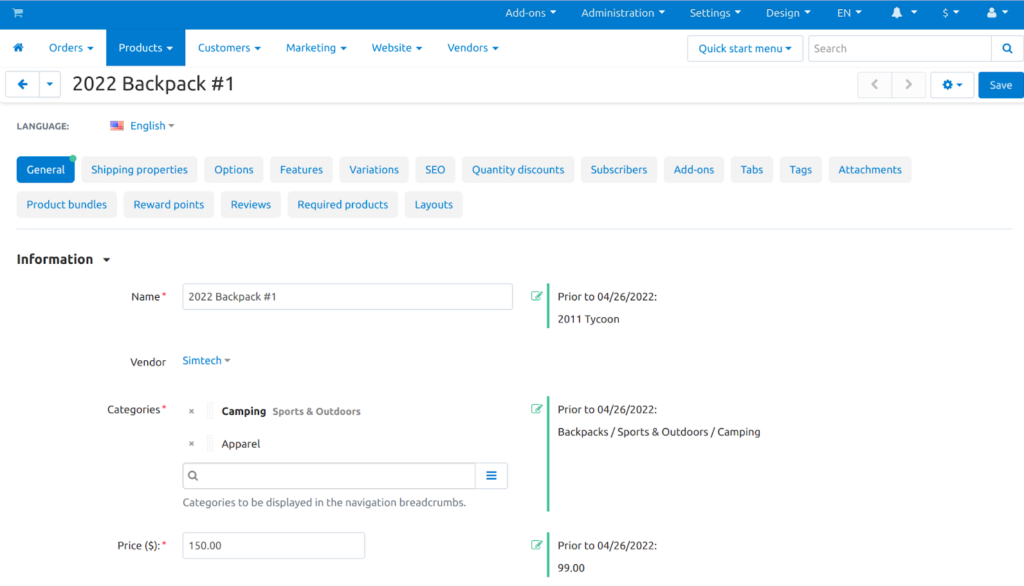
More privileges for administrators
This change is useful for owners of Multi-Vendor Plus, Ultimate and Enterprise editions. Now “User Groups” functionality allows you to give other administrators some privileges that were previously available only to the root administrator.
For example, you can allow administrators:
- Unlimited use of HTML in content—disables sanitization to allow for a broader list of HTML tags.
- To manage admin user groups—assign user groups to other admins.
- To merge vendors—transfer information and settings from one vendor to another.
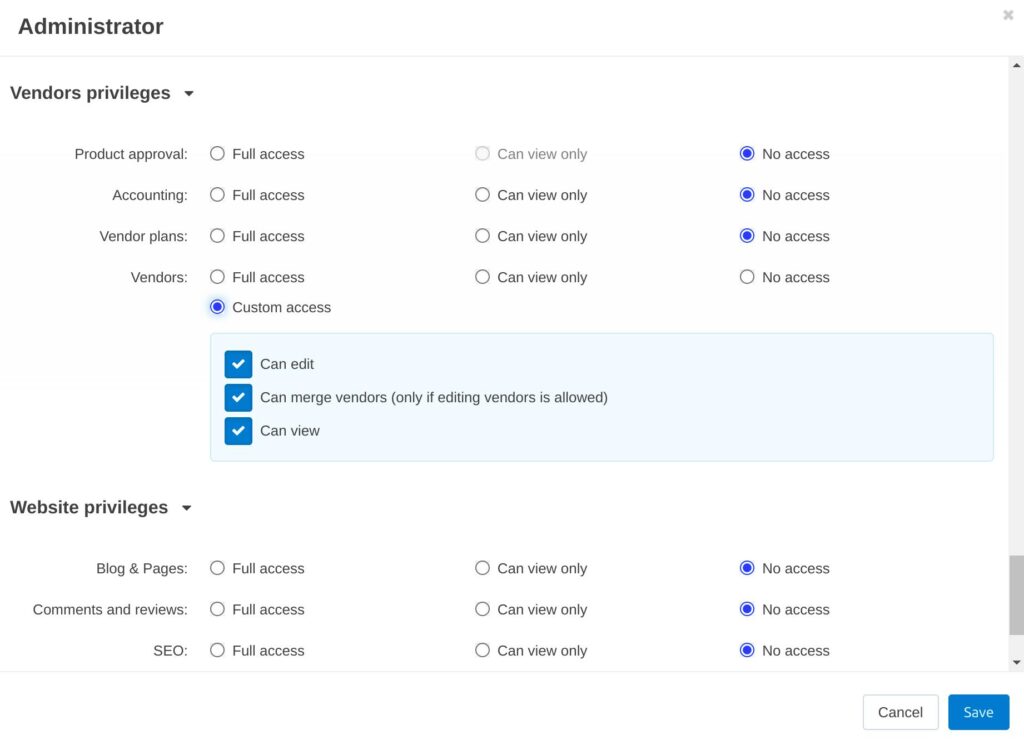
Assign an administrator to a specific storefront
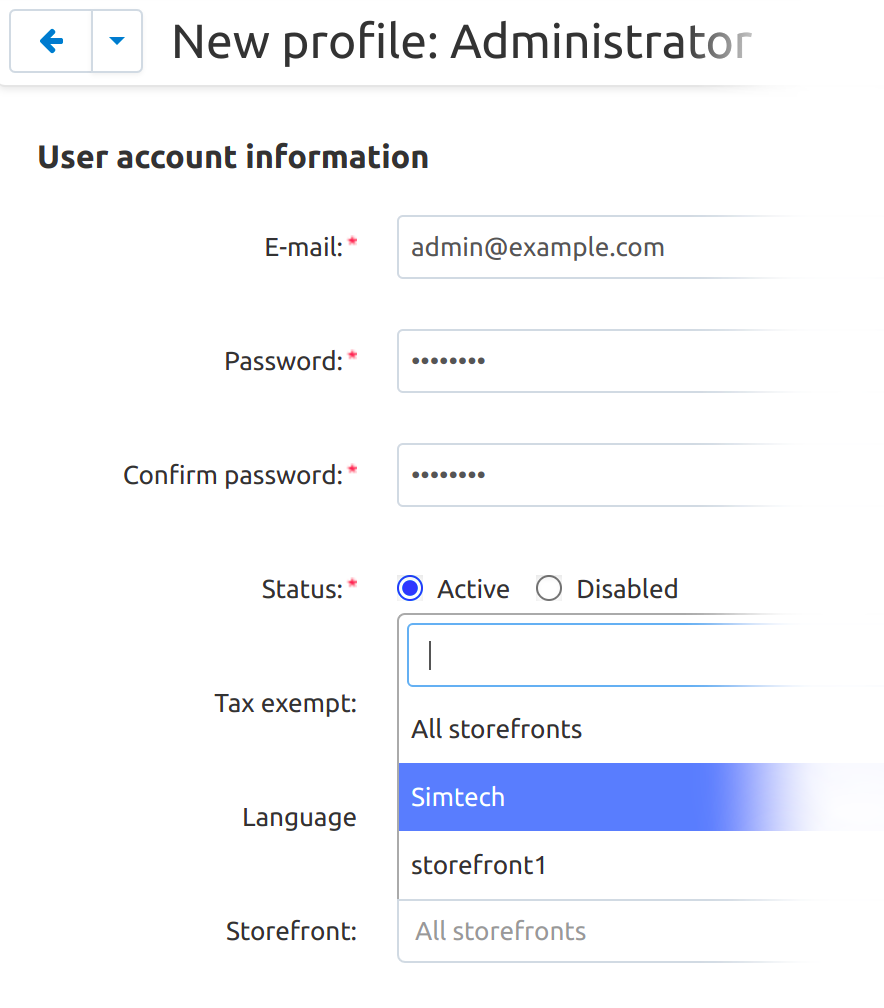
Useful functionality for owners of the Multi-Vendor Ultimate. When your marketplace is large and has different branches (be it for country or a product niche), you might have people who work with a specific branch only. In that case, it might be a good idea to give some of your admins access to a specific storefront only, without access to other storefronts.
Starting from the version 4.15.1, you can choose, which storefront this or that administrator manages. Such an administrator has access only to those elements on the platform that relate to his/her storefront.
General improvements
Trade in accordance with the EU laws
Previously, CS-Cart owners could experience difficulties with launching a store in the EU countries due to the requirements of European regulations. They had to order add-ons or look for third-party solutions. We added functionality to the CS-Cart 4.15.1 that allows EU-related stores to better comply with the European Union requirements.
GDPR: Ability for customers to choose which services and cookies they allow
Many privacy-related laws (like the European Union’s GDPR) require online stores to inform site visitors about cookies and give them the choice, which cookies to allow. Previously, you had to look for third-party solutions or paid services for this.
CS-Cart 4.15.1 brings a cookie consent form. Visitors can see the list of services that set cookies, and what they do. All optional cookies (that do not affect the ability to place an order) can be disabled, if a visitor chooses so.
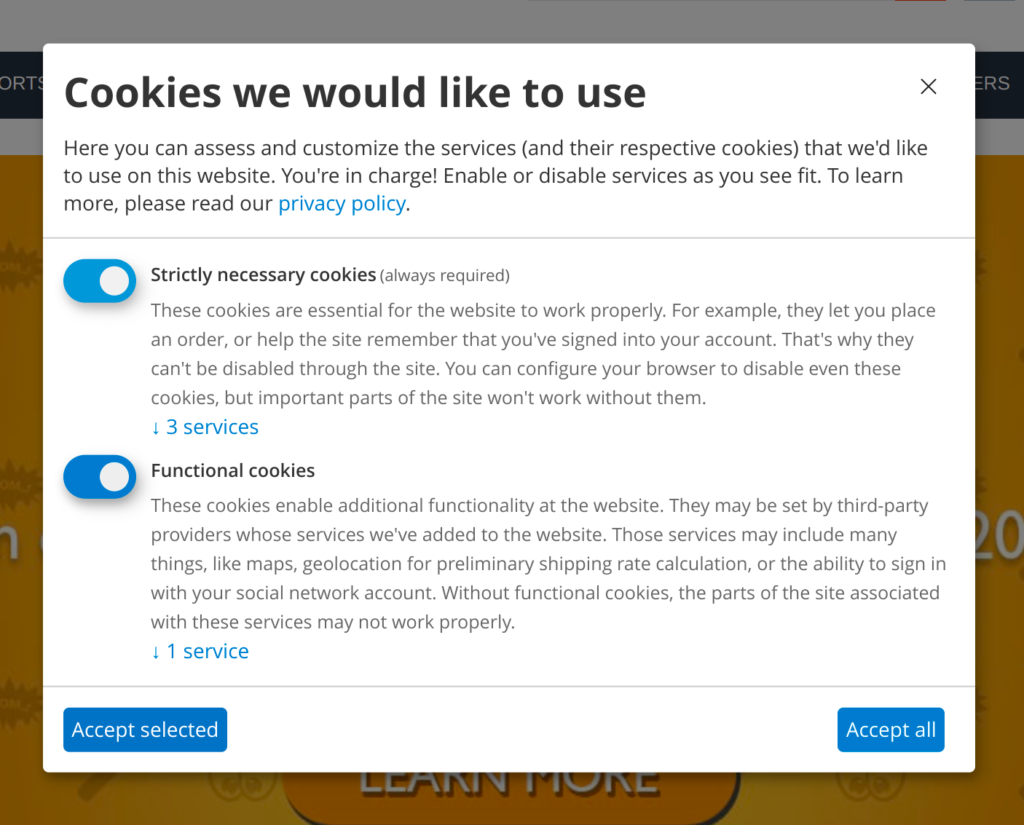
Cookies are configured in the GDPR add-on. Just select “Explicit consent” and the page where you’ll have the privacy policy.
If third-party add-ons set cookies (or use services that set them), then developers will need to update them to provide the list of services and ensure that cookies aren’t set before consent is received. We have already sent instructions to developers on how to update add-ons.
Ability to specify the price per unit (liter, milliliter, kilogram, etc.)
There is a requirement for stores in the European Union, which states that the price tag for some products must also contain the price per unit. For example, if a store sells liquids, the store owner needs to show not only the price of the bottle or flask, but also the price per liter/milliliter. Moreover, you might need a price tag for a specific number of units. For example, one of our clients from the EU asked the ability to show not the price per milliliter, but per 250 ml. instead.
That’s why in 4.15.1 we added an add-on that allows you to specify the price per unit. After the installation of the “Price per unit“ add-on, the following changes will appear in our store:
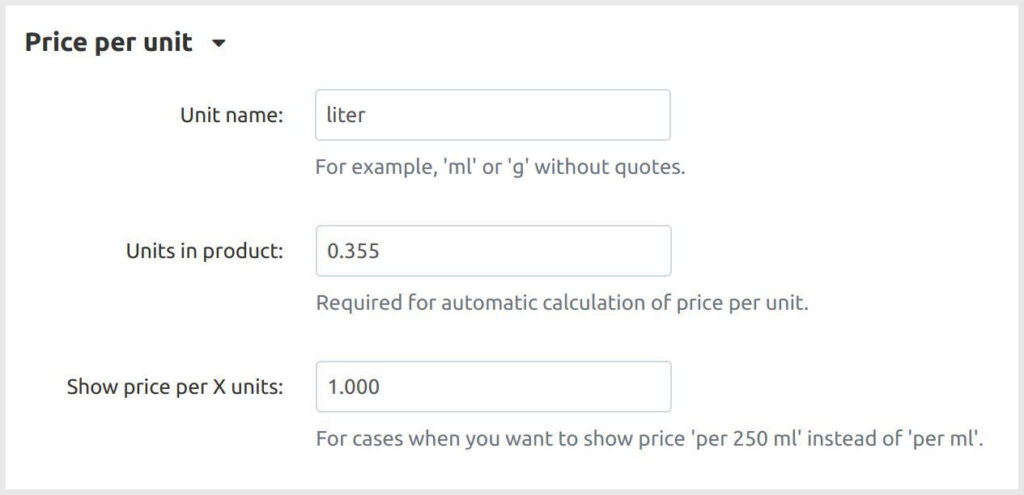
- The product editing page will get the “Price per unit” section.
For example, a jar of Coca-Cola 355 ml is on sale. Then, if you want to show the price per liter on the storefront, you need to specify the measurement unit as “liter” and the number of units in the product as “0.355”.
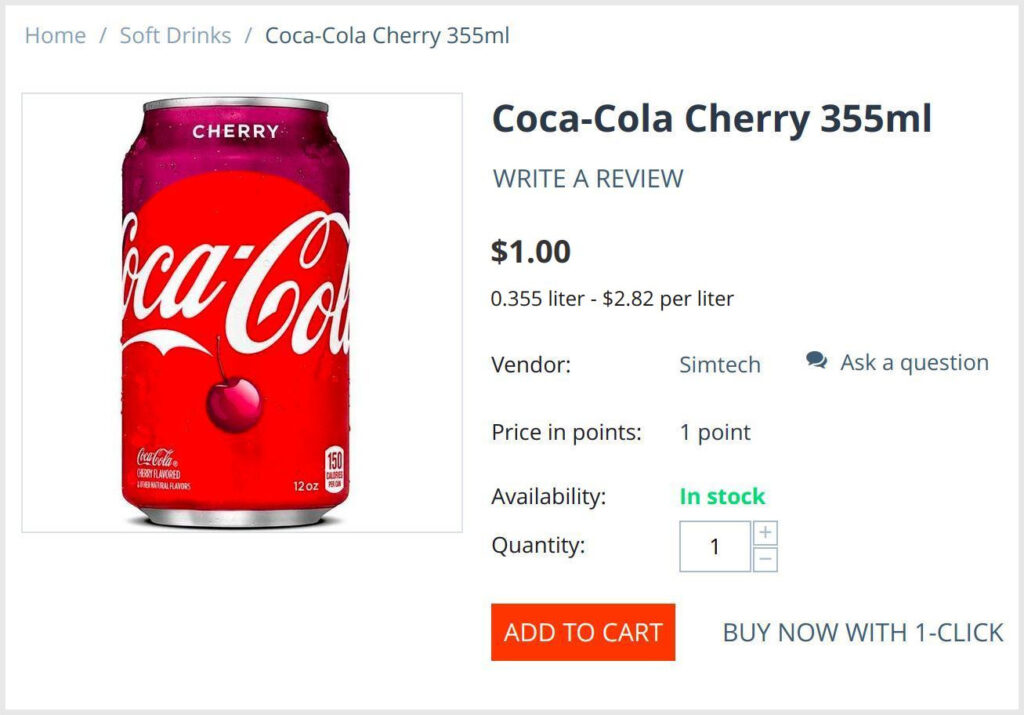
- The automatic calculation of the price per unit.
- The price per unit will appear on the product list
and on the product page. - Export and import of the “Unit Price” field along with the rest of the product fields.
Single price for EU countries and no taxes for tax-exempt customers
The European Union requires that prices in stores always include VAT. But VAT rates are different in EU countries, and the price should be the same regardless. There is a special setting in CS-Cart taxes to indicate that the tax is already included in the price. But previously, when the customer was tax exempt, the VAT wasn’t subtracted from the price.
In 4.15.1, we changed that. Now you can have the same price for all EU countries, and the product and shipping prices won’t include taxes for tax-exempt customers. The tax will be charged in accordance with the tax rate that you set for the customer’s country.
For now, CS-Cart doesn’t automatically set the tax rates or determine whether the customer is tax-exempt or not. This is a more complex task, so at first we decided to add the ability to subtract the tax from the price. An automatic check for tax exemptions may or may not appear in one of the future versions.
Interaction with third-party services through Zapier
In version 4.15.1, we integrated CS-Cart with Zapier, a code-free platform for creating links between applications. You can now use Zapier to connect CS-Cart with an app that doesn’t have CS-Cart integration yet.
Here’s how it works. You choose apps to create integrations in your Zapier account. Then you specify which event in the first application will be the trigger for launching the action in the second one.
The free Zapier plan allows you to create integrations between two applications or services. So, you can set up notifications about new orders to Slack or to your phone as SMS; automatically share a new product on Pinterest or Twitter, etc. There can be more actions to handle more complex scenarios, like “when CS-Cart receives a new order, take customer’s name from the order and send a welcome email to that customer, if it hasn’t been done before”. But what we like the most are simple things, like adding every new order as a new row in a Google Sheet.
Since the integration of CS-Cart with Zapier has just been released, it has the Beta status on the Zapier side for now. Once we hit a certain number of users, CS-Cart may get more ways to interact with other applications through Zapier.
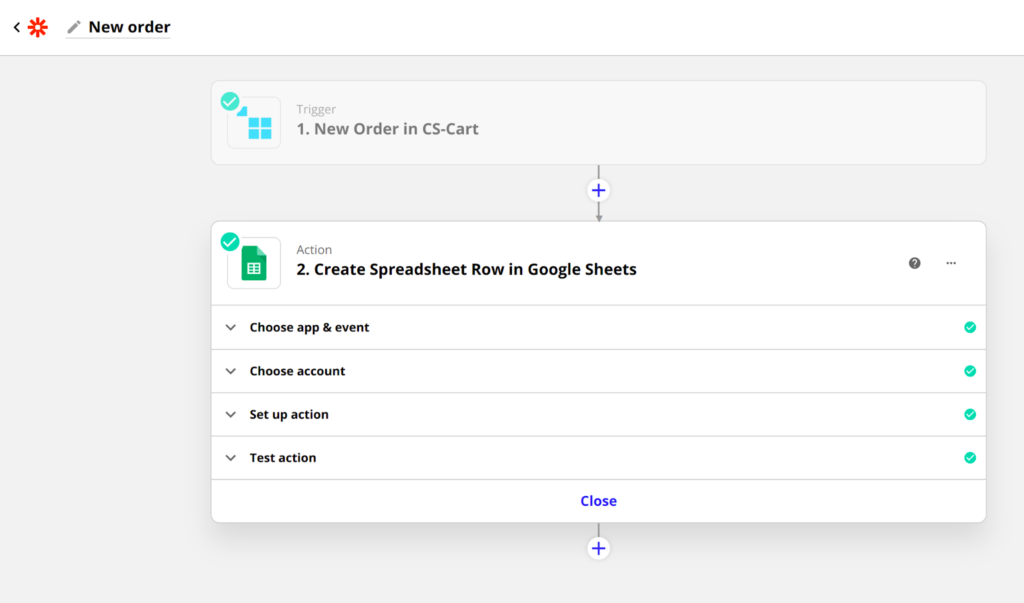
Simplified product import
The import process became more user-friendly, you can quickly set up your store and start selling.
- The product import page became more accessible. Now you can get to the product import page from the list of products. If you are importing for the first time, you will immediately see the import settings.
- More understandable interface. We hid all optional settings, and now the import guides you step by step.
- Simplified image loading. Now it is not necessary to upload files to the store website or third-party hosting. You can upload the archive with images on the same page where you upload the import file.
- An example of a preset. If you’ve set up multiple imports for vendors, then they can now download a sample file. This will help them to find out the file type and format of data received by CS-Cart.
Add a new feature variant quickly
Previously, the field for adding new feature variants was at the very bottom, under all existing variants. This is not convenient, especially for large stores with more than a hundred variants for the “Brand” feature.
We updated the addition of variants on the feature and option editing pages. The button for adding a variant is available at the top of the list.
CS-Cart helps to open your store or marketplace faster
When you are just launching your marketplace, you might have questions. All CS-Cart functionality that can help with the launch (video tutorials, documentation, useful add-ons from our marketplace) is collected in the admin panel in the Help section. Open it by clicking the ? button. If you still have questions, you can now contact Customer Care and see your latest tickets directly from the admin panel. Customer Care is the best place to ask a question or get help.
More translations into various languages (some of the EU languages included). We have added machine translations, and our dedicated partners and community help to improve them by checking them manually. Together we save time for those who want to open their sales platform as soon as possible.
Choose currency for the storefront
Owners of the Ultimate and Enterprise editions can create additional storefronts, for example tailored to the market of another country. Starting from the version 4.15.1, it is easier to set up your marketplace/store with multiple storefronts, because now you can set not only the default language for the storefront, but also the default currency.
When a storefront is tailored for a specific country, you might still want to offer multiple currencies, but select the country’s currency for customers by default. For example, if the base currency is the dollar, then for the storefront created for Greece, you can select the euro currency in the appearance settings. All the default prices on this storefront will be displayed in euros.

Quantity discount for different variations
In CS-Cart, you can allow customers to buy similar products at a discount for a certain quantity. For example, a 50% discount for 5 black S-sized T-shirts. However, if the buyer added 5 T-shirts in different colors and sizes to the cart, the quantity discount did not apply.
In 4.15.1 we added a special setting to the “Product Variations” add-on. With that setting, all variations in the group will count as a single variation for the purposes of quantity discounts. So customers can buy 5 T-shirts in different colors and sizes, and still get a quantity discount.
Warehouses: Products now return to the warehouses they were taken from
Previously, if a customer wanted to return a product, this product was counted to the nearest warehouse from the customer’s rate area. It was done that way because CS-Cart is not an inventory management system. We assumed (and still do) that the store owners who use warehouses track their stock elsewhere, and update the quantities in CS-Cart through import or integrations.
However, our approach could cause situations when a product was ordered, then the order got canceled, and the product’s quantity was subtracted from one warehouse and added to another.
To avoid such situations, CS-Cart now remembers the warehouse where the product was ordered from and transfers it to this warehouse when returning a product.
PHP 8.0 support added; the minimum required PHP version is now 7.1
CS-Cart unofficially worked with PHP 8.0 at least since version 4.13.x. And now, after extensive testing and a few improvements, we can now officially announce the support of PHP 8. The general rule is as follows: the newer version of CS-Cart you have, the better it works with the latest PHP versions. Support for PHP 8.1 is not yet available (there are some issues that we’re aware of), but we plan to add it in future versions.
We used to support PHP 5.6 to make CS-Cart work out of the box with as many servers as possible. But the life cycle of PHP 5.6 is long over. It is now risky to use PHP 5.6 because of potential security risks. And by dropping its support in favor of newer PHP versions, we make development of CS-Cart and its add-ons and themes easier and faster.
The full list of changes with bug fixes is in changelog.
_________________________________________________________________________
The upgrades to version 4.15.1 are already available. As usual, we hand out upgrade packages in limited numbers for the first few weeks after the release. But then we lift that restriction. So if you don’t see this upgrade in your Upgrade Center yet, please check the update page later.
